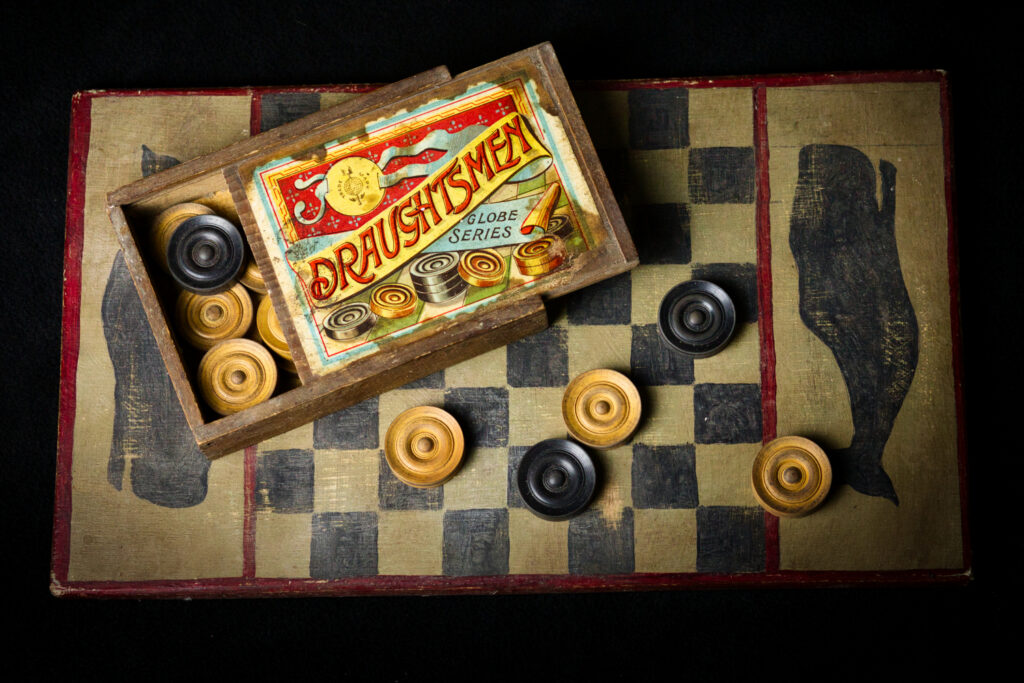When I was clearing out the garages in Sinnington I came across a box of old parlour games dating from the 1930’s onwards.
What struck me was how attractive the graphics were. While the games themselves might not hold our attention nowadays they are quite beautiful – so, I thought I’d photograph them.
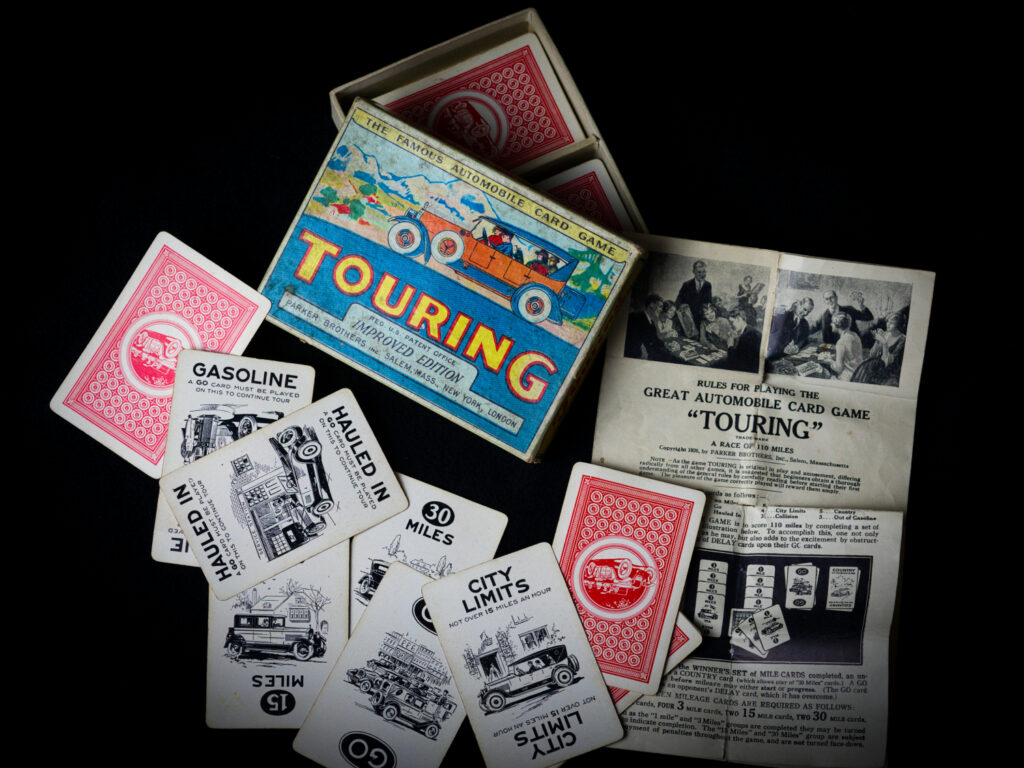
Touring was originally published in 1906 by the Wallie Dorr Company, and was picked up by Parker Bros. in 1925.
The object of the game is to be the first player to complete a trip of a set number of miles by playing mileage cards. Other players will try to slow you down by playing such cards as Broken Spring, Stop to Refuel, Missed the Curve, Populated Area, etc. You respond with Wrecker, Gasoline and eventually Go to continue moving. The action card types are slightly different between the two, and Mille Bornes adds the ‘protective’ cards, e.g. Emergency Vehicle which allows you to ignore speed limits.
The game can be played in partnership for the 4- and 6-player versions, with each partnership playing as a single driver.
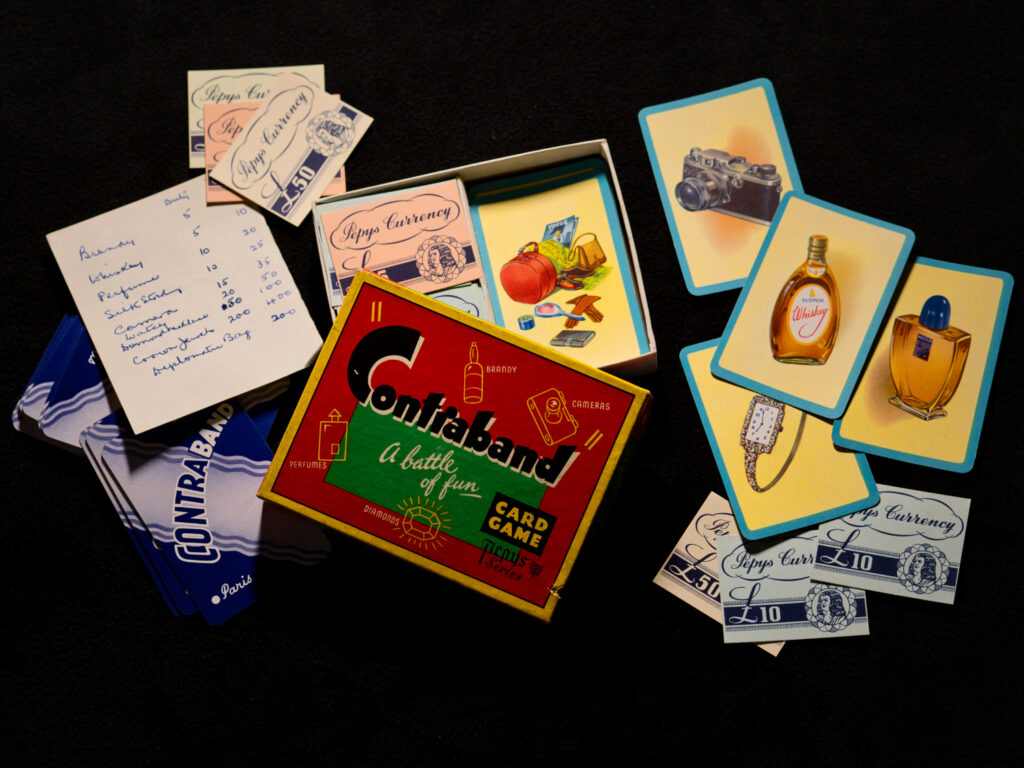
1950’s Game of ‘Contraband’ –
‘One player takes on the role of Customs Agent (this rotates, though) while the others are all travelers who truthfully or falsely declare items in their luggage (four cards drawn from a deck of items including wine, cigars, cameras, necklaces, etc.) If the Customs Agent believes them, they simply pay a duty fee and then the next player repeats the process.
If the Customs Agent does not believe the player, they may “search” the player’s luggage (cards are revealed) with two results. If the player declared accurately, the Customs Agent must pay the player 200 for defamation of character. If the player declared incorrectly, he must pay the Customs Agent fines for all items in his luggage.
Other players can also act as Informants and search luggage and there is also an attache case in the deck that can give someone diplomatic immunity and allow them to pass through Customs without being searched or paying duty fees. Of course one can bluff about having this in their hand, as well.’
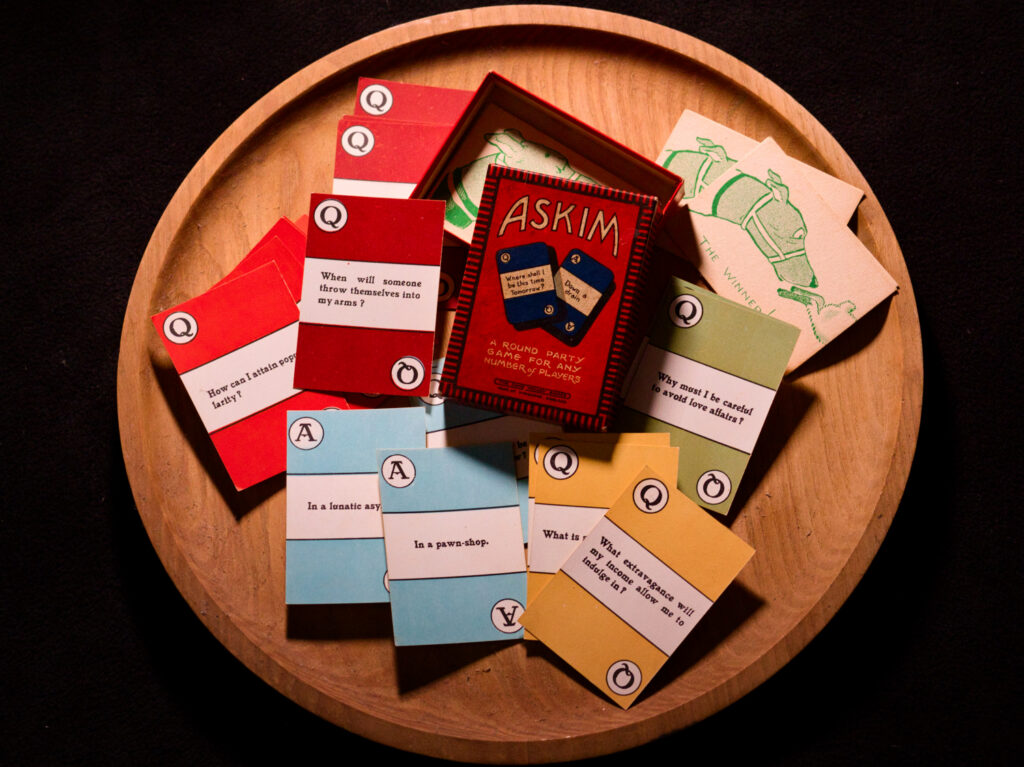
“A party game for any number of players”. First released in 1930s this one dates to the 40s or 50s.
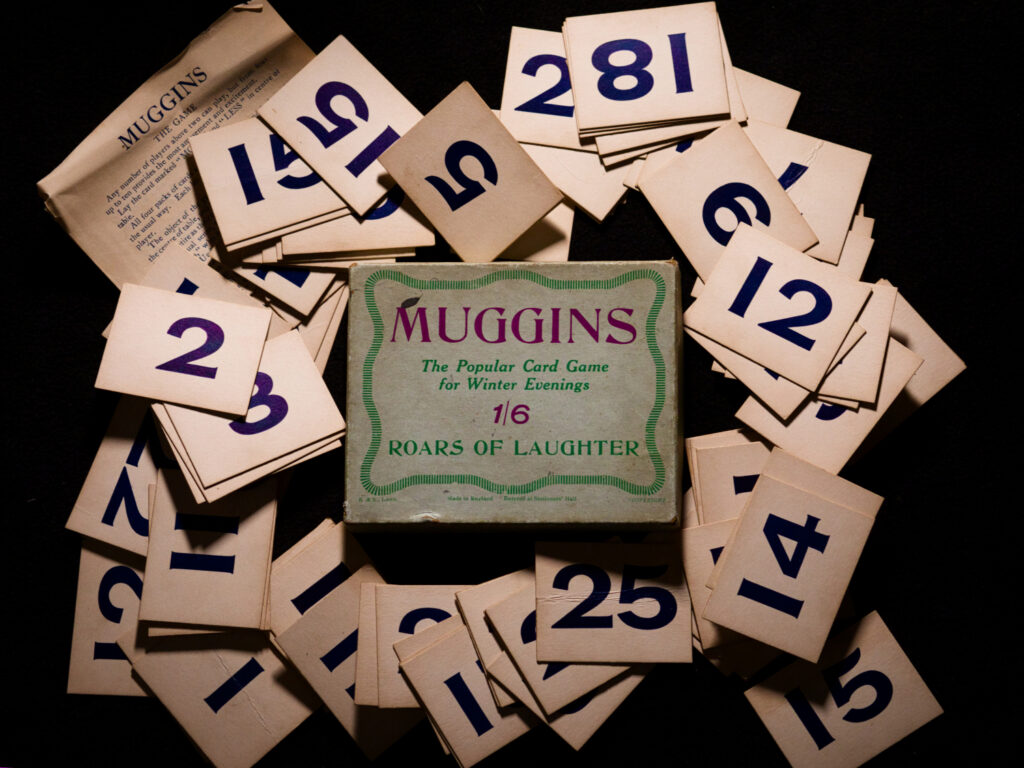
Another party game – players are trying to not be the last player with cards remaining in their hands. The game is played with 4 packs of cards numbered 1-25. Each turn a player takes the top card from his face down cards and places it elsewhere on the table (this can be on one of the piles that lies in the center of the table or on another players pile).
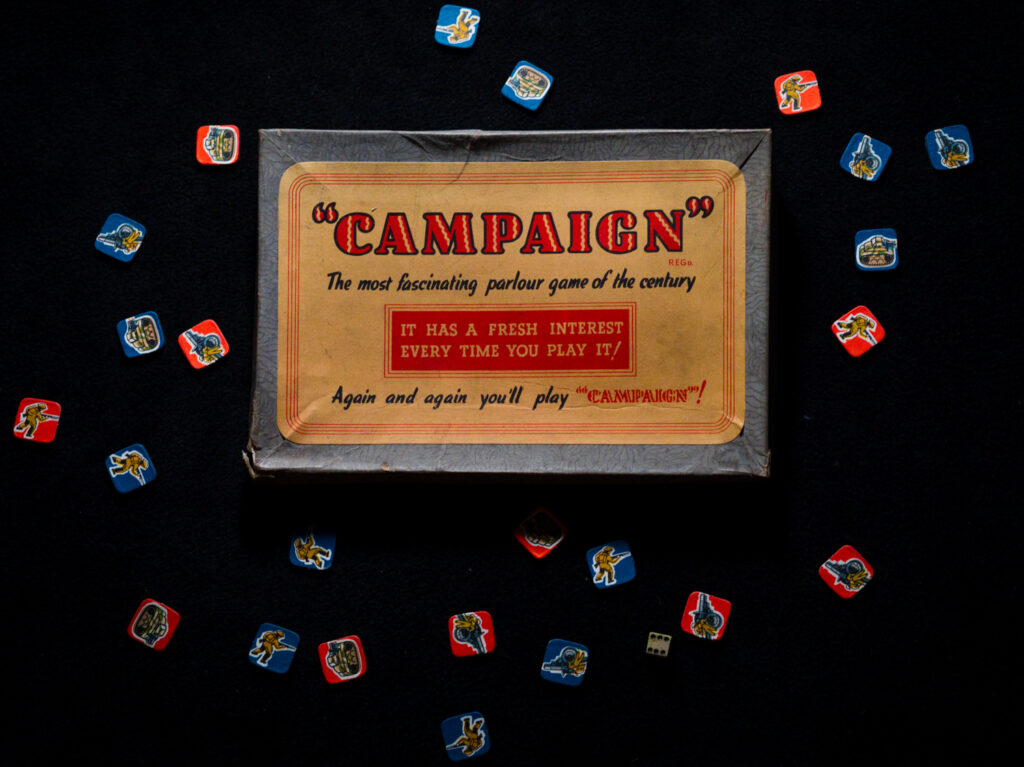
A war game from the 1940s that is not to be confused with the identically named game produced by Waddington’s. This version was produced by Wills and Hepworth in Loughborough, United Kingdom. The company is better known for producing the “Ladybird” range of children’s books.
The object of the game is to reach the opposing sides base with one of each unit type. Each side has four units of tanks, four units of artillery and six infantry units. Key bits missing from this.
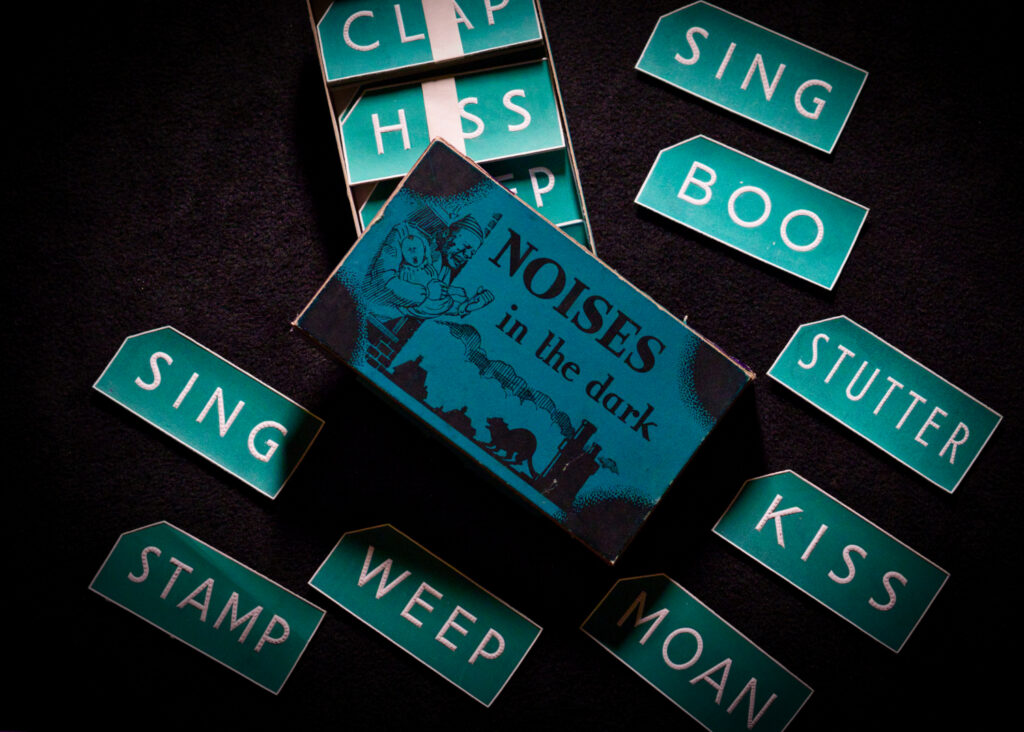
Test your Fifth Sense–Touch–in this game of mirth and laughter. Switch off the lights–‘read’ by touch the word embossed on the card–then imitate the noise.
Each round a judge is declared. The judge then picks out one noise from the box. He gives an identical copy of the noise to each player. As the lights are out, the players cannot read the card. However, each card has the word written in raised bumps like braille. It is then a race to figure out the word and make that sound. Whomever makes the correct sound first wins the round. Additionally, the judge can pass out 2-3 words. Then the players must make all those sounds to win the round.
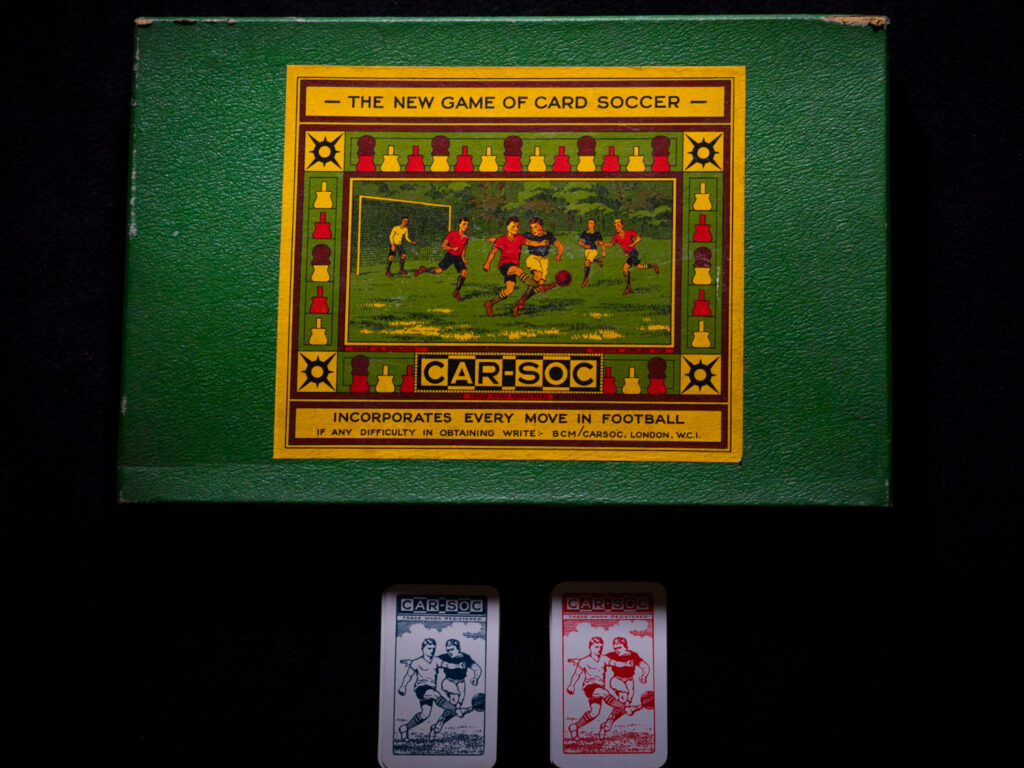
Very early British football card / board game from the 1930’s.
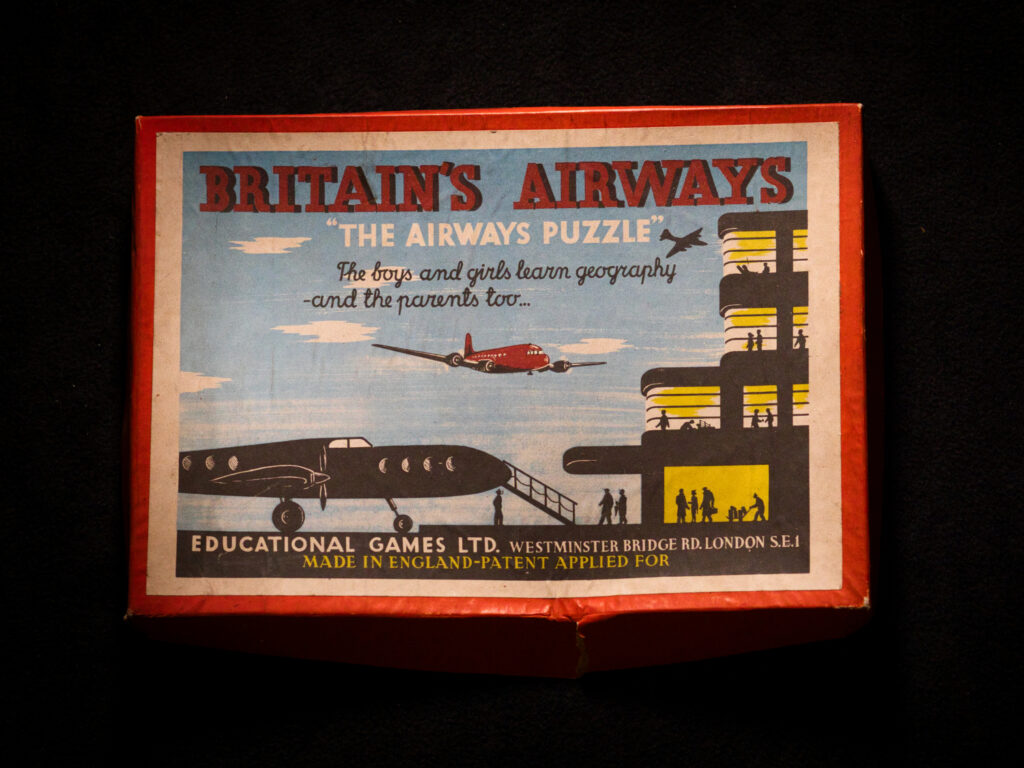
Can’t find anything on this one – probably didn’t sell well and looking at the instructions I can see why!
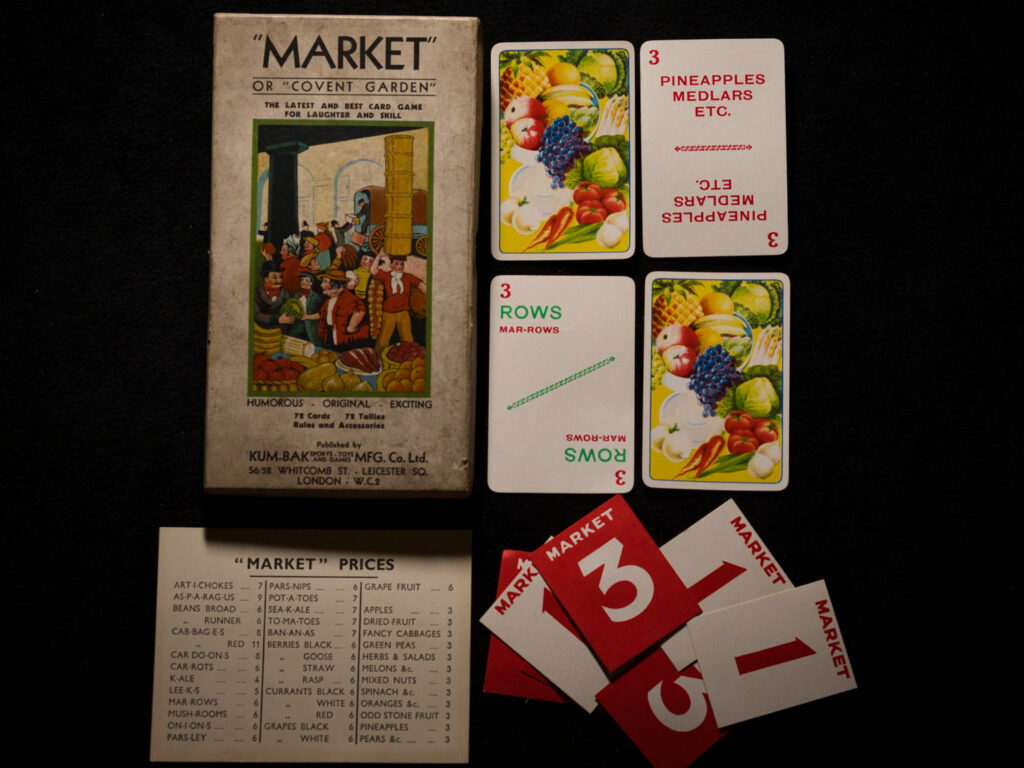
Made by Kum Bak Sports Toys and Games Mfg Co Ltd in around the 1930s.
There are 72 Market cards and 72 Tally cards, instructions, 1 ‘Fresh’ card, 1 ‘Stale’ card and 1 Market Prices card.
THE game of ” MARKET” or Covent Garden is so called solely because it is founded on the names of fruit or vegetables which are bought and sold, as in a market. Although the general procedure of market methods prevail there is no suggestion that the method of playing is precisely the manner in which business is conducted at Covent Garden or any other Market. However, for the purpose of this game, we imagine a very generous dealer buying fruit and vegetables from growers or collectors at fixed prices, and then helping them to produce other stuff by selling them what they may (or may not) want.
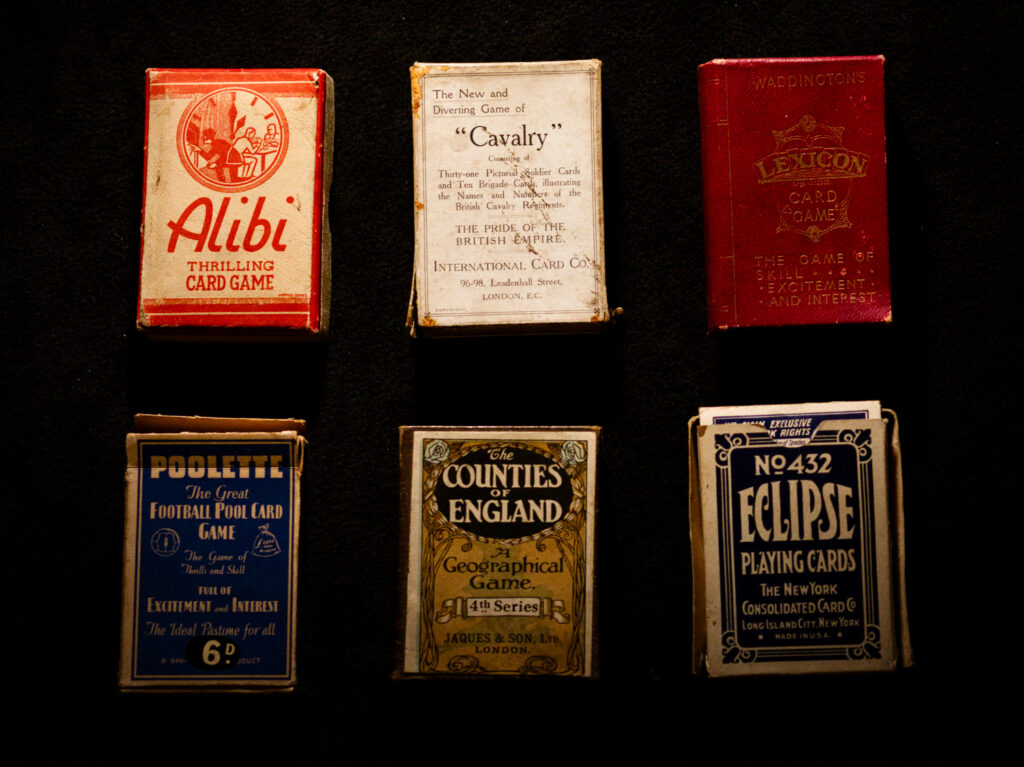
Lots of individual packs of cards type games too.
But what to do with them? We are thinking the local museum in Pickering might like them but I think we’ll hold on to them a bit longer yet – maybe try a few out at Christmas??
